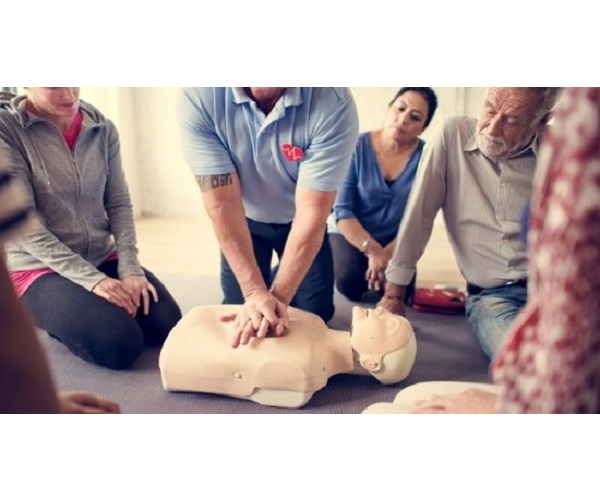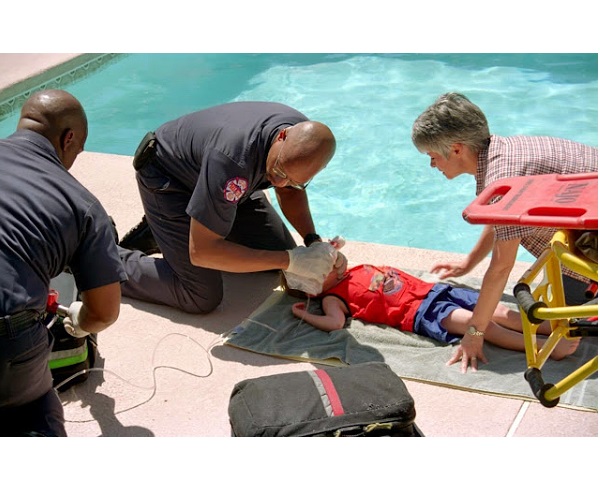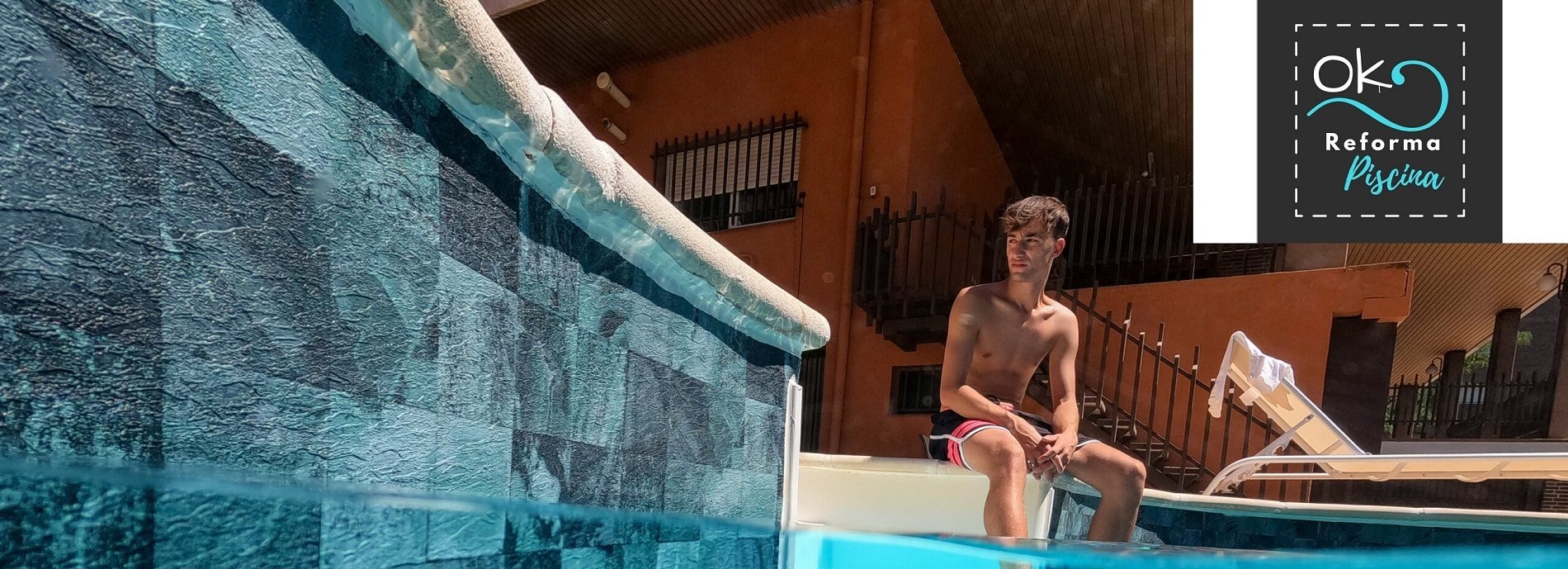
Table of contents of the page
How to do CPR technique in swimming pools: cardiopulmonary resuscitation maneuvers

CPR technique in swimming pools: cardiopulmonary resuscitation maneuvers

Choking or drowning in cats: What to do as first aid?

What maneuvers to do to avoid drowning or suffocation of a dog?
How can you learn CPR, BLS or SVA?

You can learn CPR, BLS, or SVA techniques in many different ways.
You can take a course in person or online, read a book, or watch a video. You can also learn CPR, BLS or SVA techniques through practice.
For example, many CPR and BLS courses teach resuscitation techniques using a mannequin. This allows you to practice resuscitation techniques without endangering anyone else.
Some CPR, BLS or ALS courses are designed specifically for healthcare professionals, such as doctors or nurses. Other people who can take these courses include firefighters, police officers, and other members of law enforcement.
For example, you can watch CPR and BLS videos online or read books on resuscitation techniques. You can also practice resuscitation techniques on a mannequin.
Other ways to learn CPR, BLS, or SVA techniques include attending classes in person or taking online courses. Some courses even allow you to earn a certification that you can use to prove that you have completed the course.
What is the best way to learn CPR, BLS or VAS?

There is no single answer to this question. What works for one person may not work for another.
Some people learn better visually, while others learn better by listening or reading.
Practice CPR, BLS, and SVA techniques on a mannequin before using them on a real person. This way, you will be able to practice CPR, BLS and SVA techniques without endangering anyone else.
Different types of training in CPR, BLS and VAS

There are different types of training in cardiopulmonary resuscitation (CPR), basic life support (BLS) and advanced life support (ALS).
These courses vary in terms of duration, content and objectives.
CPR, BLS and SVA courses can be taught by a doctor or nurse with experience in the area of cardiopulmonary resuscitation. They may also be available as online courses or in book/guide format.
CPR, BLS, and SVA courses are typically offered as in-person classes lasting between 4 and 8 hours. Some of these courses are designed to respond to a specific emergency, such as a heart attack or stroke. Other courses provide more extensive instructions on how to perform CPR and BLS in a variety of emergency situations.
Objectives of training courses in CPR, BLS and VAS

CPR, BLS, and SVA course objectives typically include:
- Provide instructions on how to detect a medical emergency.
- Teach people how to perform proper CPR and/or BLS.
- Help people understand how automated external defibrillators (AEDs) work.
- Provide instructions on how to use other emergency devices and equipment, such as CPR masks and stethoscopes.
- Teach people how to evaluate and improve their CPR/BLS technique.
- Give people the opportunity to practice CPR and/or BLS on a mannequin.
Who can take a CPR, BLS or VAS course?
CPR, BLS and ALS courses are available to everyone.

No type of certification or license is required to take a CPR, BLS, or VAS course. However, some courses may be intended for people with certain medical experience or knowledge.
For example, some CPR and BLS courses are designed specifically for healthcare professionals, such as doctors or nurses. Other people who can take these courses include firefighters, police officers, and other members of law enforcement.
You can also search for CPR, BLS, or SVA courses online or through smartphone apps. These courses are usually free or low-cost, and can help you be better prepared to respond to a medical emergency.

CPR, BLS and SVA courses for healthcare professionals
Healthcare professionals, such as doctors and nurses, can take advanced courses in CPR, BLS, and VAS.
These courses are designed to help healthcare professionals stay up to date with the latest resuscitation techniques and be better prepared to respond to a medical emergency.
Advanced CPR, BLS, and SVA courses can address topics such as:
- Resuscitation techniques in newborns and young children.
- Resuscitation techniques for obese adults.
- Resuscitation techniques in patients with special medical conditions, such as asthma or diabetes.
- How to use automated external defibrillators (AEDs) effectively.
- Management of other emergency medical complications, such as heart attacks and strokes.
- The use of preventive medicine to reduce the risk of medical emergencies.

CPR, BLS and SVA courses for children
What CPR, BLS, and SVA courses for children typically teach
Some homeschool programs and schools offer CPR, BLS, and VAS courses for children. These courses are designed to teach children how to detect a medical emergency and how to respond appropriately.
CPR, BLS, and SVA courses for children typically teach:
- Basic resuscitation techniques.
- How to use an automated external defibrillator (AED).
- How to spot signs of a heart attack or stroke.
- How to call emergency services.
- What to do while waiting for emergency services to arrive.

CPR, BLS and SVA courses for older adults
Seniors can take CPR, BLS, and SVA courses designed specifically for them.
These courses are designed to teach older adults how to detect a medical emergency and how to respond appropriately.
CPR, BLS, and ALS courses for older adults typically teach:
- Basic resuscitation techniques.
- How to use an automated external defibrillator (AED).
- How to spot signs of a heart attack or stroke.
- How to call emergency services.
- What to do while waiting for emergency services to arrive.
Other frequently asked questions and information about the CPR, BLS or SVA course

How much does it cost to take a CPR, BLS or SVA course?
CPR, BLS and VAS courses may vary in cost.
Free or low-cost courses are available through many organizations, such as local emergency services and schools.
- More expensive courses may include special equipment, such as a resuscitation mannequin, or be designed for a specific audience, such as healthcare professionals or older adults.
- Ask your health insurance if it covers the cost of a CPR, BLS, or AVA course. Some health insurance may cover part of the cost of a course if it is deemed medically necessary.
How long does a CPR, BLS or SVA course last?
CPR, BLS and VAS courses can last from a few hours to several days.
These courses vary in terms of duration, content and objectives. Shorter courses typically teach basic resuscitation techniques, while longer courses may teach advanced resuscitation techniques and management of other medical emergencies.
- CPR, BLS and SVA courses can be taught by a doctor or nurse with experience in the area of cardiopulmonary resuscitation. They may also be available as online courses or in book/guide format.
- CPR, BLS, and SVA courses are typically offered as in-person classes lasting between 4 and 8 hours. Some of these courses are designed to respond to a specific emergency, such as a heart attack or stroke. Other courses provide more extensive instructions on how to perform CPR and BLS in a variety of emergency situations.
Are CPR, BLS and SVA courses mandatory?
No, CPR, BLS and SVA courses are not mandatory. However, it is recommended that everyone learn at least basic resuscitation techniques.
- Learning CPR and BLS techniques can help you save a life in a medical emergency.
- CPR, BLS, and ALS courses can also be useful if you work in a place where there are children or older adults, such as a daycare or nursing home. Knowing CPR and BLS techniques can help you be better prepared to respond to a medical emergency.
Are CPR, BLS and SVA courses safe?
Yes. CPR, BLS and SVA courses are safe.
- No type of certification or license is required to take a CPR, BLS, or VAS course. However, some courses may be intended for people with certain medical experience or knowledge.
- For example, some CPR and BLS courses are designed specifically for healthcare professionals, such as doctors or nurses. Other people who can take these courses include firefighters, police officers, and other members of law enforcement.
How is a CPR, BLS or VAS course certified?
CPR, BLS and SVA courses do not require any type of certification. However, many courses offer a certification that you can use to prove that you have completed the course.
- Some organizations, such as local emergency services and schools, may require CPR, BLS, or VAS certification to work in certain areas.
How do you renew a CPR, BLS or VAS certification?
Most CPR, BLS, or VAS certifications do not expire. However, some organizations may require individuals to renew their CPR, BLS, or VAS certification from time to time.
- For example, local emergency services may require people to renew their CPR, BLS, or VAS certification every two years. Schools may require teachers to renew their CPR, BLS, or VAS certification every five years.
